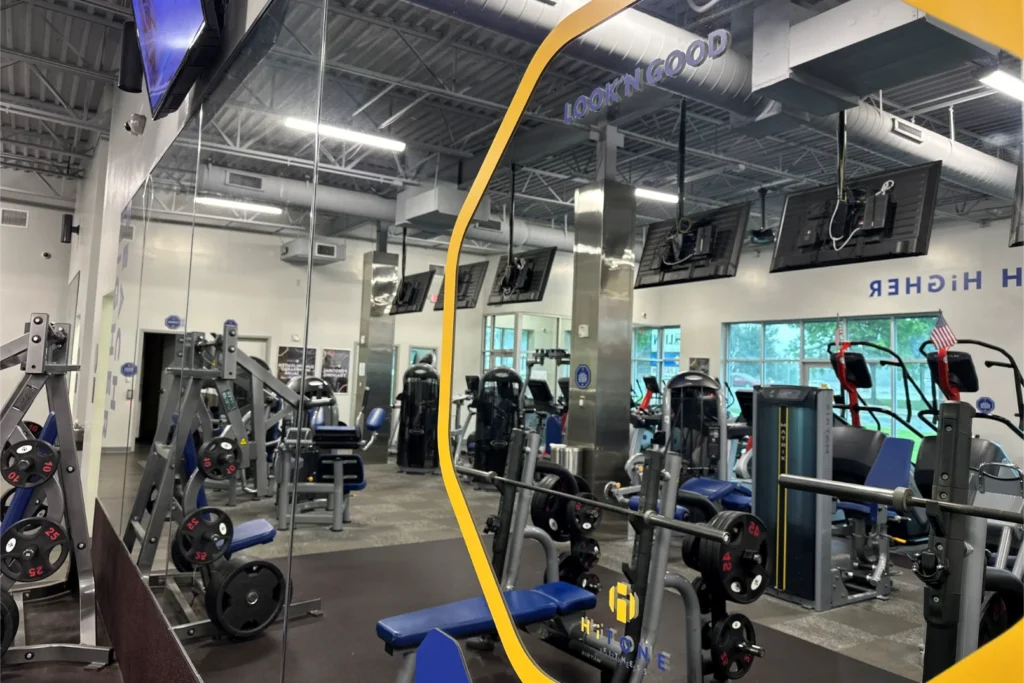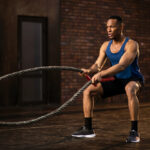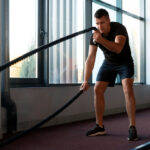The kettlebell lateral swing, a compelling variation of the traditional kettlebell swing, is an excellent exercise for those looking to spice up their fitness routine. This guide will provide you with a comprehensive approach to mastering the kettlebell lateral swing, ensuring you perform this exercise safely and effectively. Whether you’re a fitness enthusiast or a newcomer, understanding the nuances of this workout can significantly enhance your physical strength and endurance.
What is a Kettlebell lateral swing?
The kettlebell lateral swing is an innovative twist on the classic kettlebell swing. Unlike the traditional version, which involves swinging the kettlebell between the legs and up to chest height, the lateral swing moves the kettlebell in a horizontal arc from one side of your body to the other. This movement targets a variety of muscle groups, including the obliques, deltoids, and core, making it a multifaceted exercise that improves not only strength but also coordination and balance.
Preparing for your workout
Before jumping into the kettlebell lateral swings, it’s essential to prepare both your body and your workout environment:
- Choose the right kettlebell: Start with a kettlebell weight that you can comfortably swing. Typically, 10 to 20 pounds is suitable for beginners, but this can vary based on your strength and experience.
- Set up your space: Ensure you have enough space to perform the swings without obstruction. A clear area of about six feet around you is ideal to safely execute the movements.
- Warm-up: Begin with a general warm-up consisting of 5-10 minutes of light cardiovascular exercise, such as jogging or skipping rope. Follow this with dynamic stretches, particularly focusing on the hips, shoulders, and back to prepare these areas for the range of motion required in the swings.
The step-by-step guide
Executing the kettlebell lateral swing correctly is crucial for maximizing the exercise benefits while minimizing injury risk. Here’s how to do it:
- Starting position: Stand with your feet slightly wider than hip-width apart. Hold the kettlebell with both hands in front of your body, arms extended.
- The initiation: Engage your core and begin to swing the kettlebell to one side, hinging slightly at the hips and knees as you move the weight smoothly and steadily.
- The swing: As the kettlebell reaches the apex of the swing on one side, use your obliques and hips to reverse the direction, swinging the kettlebell across to the opposite side in a controlled manner.
- The movement continuation: Continue the motion from side to side, maintaining a rhythmic pace. Keep your eyes on the kettlebell, your core engaged, and your movements fluid.
- Finishing the exercise: To stop, slow down the swing gradually until the kettlebell is back in front of you at a standstill. Carefully place it on the ground to avoid any sudden movements that might strain your muscles.
Common mistakes and how to avoid them
When performing the kettlebell lateral swing, certain common mistakes can hinder your progress and increase the risk of injury. Here’s how to identify and avoid these pitfalls:
- Poor posture: Slouching or rounding your back can lead to back injuries. Always maintain a neutral spine by engaging your core throughout the exercise.
- Over-swinging: Swinging the kettlebell too high or too fast can lead to loss of control. Keep your swings controlled and horizontal to maintain balance and effectiveness.
- Using too much weight: Starting with a kettlebell that’s too heavy can compromise your form. Begin with a lighter weight and increase only when you can perform the swing with perfect technique.
- Ignoring the hip hinge: The swing relies heavily on the hip hinge motion. Neglecting this can place undue stress on your lower back. Focus on hinging at the hips and using your core to power the movement.
If you need more tips, don’t hesitate to get in touch with our personal trainers in Gastonia.
Final thoughts
The kettlebell lateral swing is a versatile and effective exercise that targets multiple muscle groups, enhances core stability, and improves overall fitness. By following the detailed steps and advice outlined in this guide, you can safely add this dynamic exercise to your fitness regimen. Remember to start slow, focus on proper form, and gradually increase the intensity as you become more comfortable with the movement. With consistency and proper technique, you’ll soon see significant improvements in your strength, endurance, and body composition.





